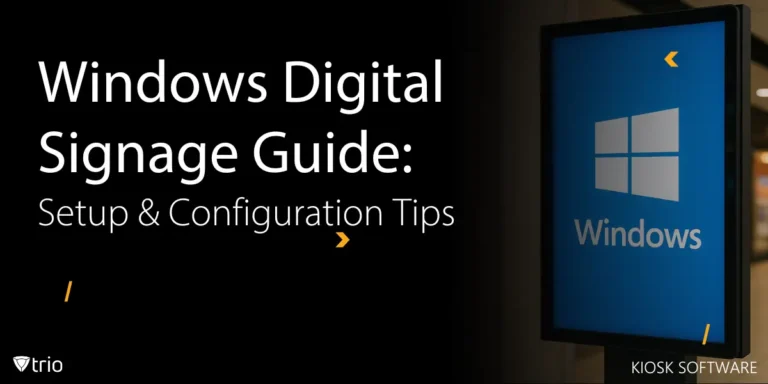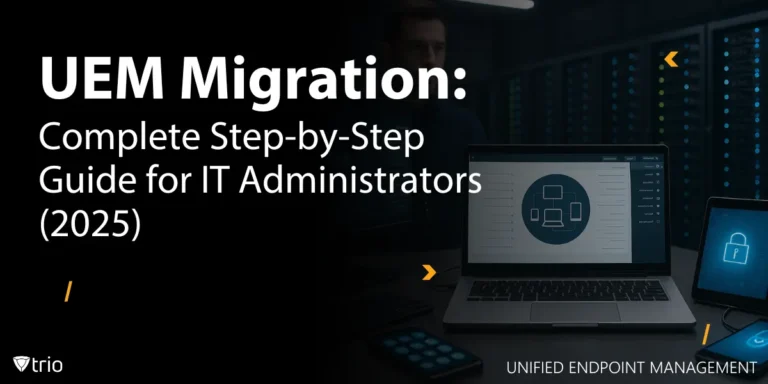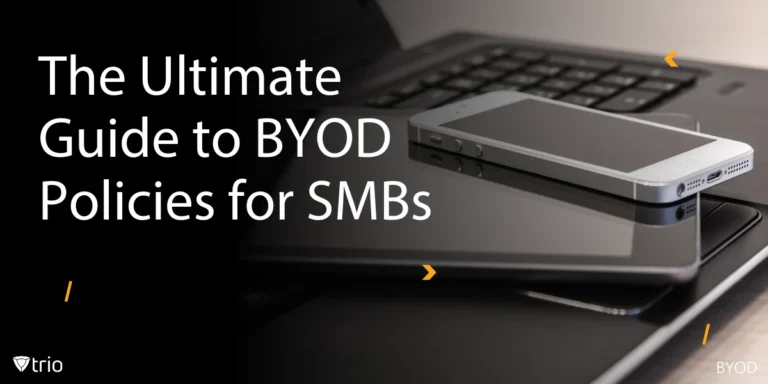In the complex realm of cybersecurity, the integration of Zero Trust Network Access (ZTNA) into mobile device security systems has emerged as a groundbreaking advancement. With the rise of remote work and Bring Your Own Device (BYOD) policies, safeguarding data and network resources has become a daunting task for organizations. This article sheds light on what ZTNA is, its benefits, and how ZTNA integration significantly improves mobile device security.
What Is Zero Trust Network Access?
Zero Trust Network Access (ZTNA), also known as the Software-Defined Perimeter (SDP), is a set of technologies and functionalities that ensure secure access to internal applications for remote users. This security model is underpinned by the principle of "never trust, always verify." Irrespective of the user's location, be it within or outside the network, ZTNA operates on an adaptive trust model where access is granted based on a need-to-know, least-privileged basis defined by granular policies.
Types of ZTNA
ZTNA encompasses different models, each designed to cater to specific security needs:
ZTNA for User Protection: This model ensures that users connect directly to applications without coming into contact with potential internet threats. This is achieved by verifying user identity, device type, location, and device security posture.
ZTNA for Workload Protection: ZTNA protects workloads from being compromised by negating lateral threat movement and data loss, allowing secure communication and protection of applications from build to run.
ZTNA for Device Protection: With the advent of Bring Your Own Device (BYOD) policies, endpoints face greater threats than ever. A comprehensive ZTNA framework ensures that the data transmitted to and from these devices is protected throughout the entire journey, preventing threats from finding a way in.
How Does ZTNA Work?
ZTNA fundamentally diverts from traditional network-centric security solutions. Instead, it operates on a Software-Defined Perimeter (SDP), which governs access to internal applications based on a user's identity. This approach eliminates the overhead of managing appliances and simplifies inbound stacks, making the network infrastructure invisible to unauthorized users.
At the core of ZTNA are four principles:
- ZTNA isolates application access from network access, reducing risks to the network and granting access only to specific applications for authenticated users.
- It establishes outbound-only connections, ensuring network and application infrastructure invisibility.
- Native app segmentation in ZTNA ensures one-to-one application access for authorized users, preventing overly permissive access and the risk of lateral movement of threats.
- ZTNA adopts a user-to-application approach, de-emphasizing the network and transforming the internet into the new corporate network.

Contrasting ZTNA and VPN
Virtual Private Networks (VPNs) have been a popular legacy security solution. Still, their limitations have become apparent with the rise of long-term remote work and the rapid adoption of public cloud services. VPNs create a broad attack surface, as any user with the right credentials can log onto a VPN and move laterally throughout the network. Conversely, ZTNA secures user access on the principle of least privilege, granting access only when the user, identity, device, and location align. Furthermore, ZTNA provides granular access rather than network access, preventing lateral movement by malicious users and improving user experiences.
Advantages of ZTNA
ZTNA presents several benefits for organizations:
Elimination of legacy appliances: ZTNA allows organizations to move away from legacy remote access appliances, such as VPNs, and leverage a 100% software-based zero trust remote access solution.
Seamless user experiences: ZTNA provides fast, direct access to desired applications, enhancing user experiences.
Effortless scalability: As a cloud service, ZTNA can easily scale to accommodate an organization's changing needs.
Quick deployment: Unlike other solutions that can take weeks or months to deploy, ZTNA can be deployed anywhere and in a matter of days.
Security Benefits of ZTNA
In addition to operational benefits, ZTNA dramatically improves an organization's overall security posture:
Invisible infrastructure: ZTNA allows users to access applications without connecting them to the corporate network, eliminating network risk and keeping infrastructure invisible.
Enhanced control and visibility: Managing ZTNA solutions is easy with a centralized admin portal offering granular controls. Real-time visibility into all users and application activity allows for proactive threat detection and response.
Simplified app segmentation: ZTNA allows organizations to segment access down to individual applications, eliminating the need for complex network segmentation.
Top ZTNA Use Cases
ZTNA finds various applications in the realm of cloud security:
VPN Alternative: ZTNA can efficiently replace VPNs, which are inconvenient, slow, and pose significant security risks.
Secure Multicloud Access: With the increasing adoption of cloud applications and services, ZTNA provides robust security and access control for multicloud strategies.
Reducing Third-Party Risk: ZTNA reduces third-party risk by ensuring external users never gain access to the network and allowing only authorized users to access permitted applications.
Accelerating M&A Integration: ZTNA can expedite integrations during mergers and acquisitions, reducing the time and management needed for a successful M&A.
Implementing ZTNA
Implementing a Zero Trust model can be a gradual process. Three core elements of Zero Trust implementation include:
- Knowledge and conviction: Understanding new, better ways to use technology to reduce costs, cut complexity, and advance objectives.
- Disruptive technologies: Moving away from legacy solutions that don't hold up after the internet, threats, and workforces have changed over the last three decades.
- Cultural and mindset change: Driving success by bringing teams along. When IT professionals understand the benefits of Zero Trust, they start driving it, too.

Considerations for ZTNA Implementation
Choosing a ZTNA solution requires careful consideration. Key factors include whether the vendor requires an endpoint agent to be installed, the types of applications supported, whether the offering is delivered partly or wholly as cloud-based services and the geographical diversity of the vendor's entry and exit points.
ZTNA Integration with MDM Software: The Trio Solution
Integrating ZTNA with Mobile Device Management (MDM) solutions provides a robust framework for securing network access seamlessly from campus, remote, cloud, and hybrid environments. One such solution is the Trio MDM software, which leverages SCIM protocol for automating the management of user identities across disparate systems and platforms. This integration streamlines administrative tasks, strengthens compliance efforts, and improves the overall user experience.
Embracing SCIM within MDM solutions, such as Trio, heralds a new era of identity management, where simplicity, scalability, and security converge to meet the evolving needs of modern businesses. It ensures that access to corporate resources is based on trust, continuous monitoring, and strict security policies, reducing the risk of data breaches and other security incidents.
Concluding Thoughts
In an era where cyber threats are becoming more sophisticated and pervasive, adopting a Zero Trust Network Access approach is a proactive step toward securing organizational assets. By assuming that no entity is inherently trustworthy and implementing robust access controls, organizations can fortify their cybersecurity posture and adapt to the dynamic nature of the modern digital landscape. The integration of ZTNA enhances mobile device security, making it an essential tool in the arsenal of today's cybersecurity strategies. Try out Trio’s free demo today to experience the benefits of ZTNA integration firsthand.
Get Ahead of the Curve
Every organization today needs a solution to automate time-consuming tasks and strengthen security.
Without the right tools, manual processes drain resources and leave gaps in protection. Trio MDM is designed to solve this problem, automating key tasks, boosting security, and ensuring compliance with ease.
Don't let inefficiencies hold you back. Learn how Trio MDM can revolutionize your IT operations or request a free trial today!





